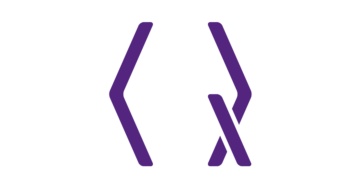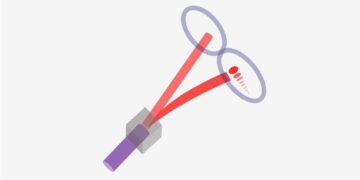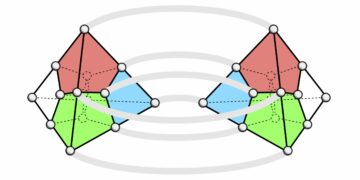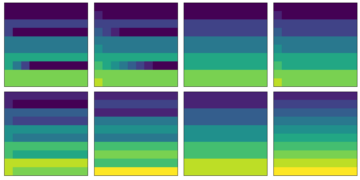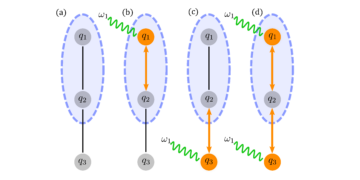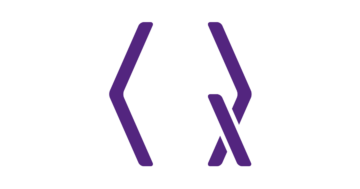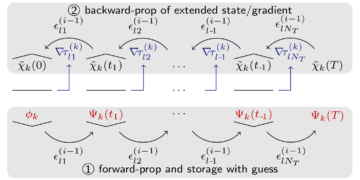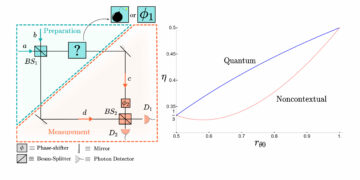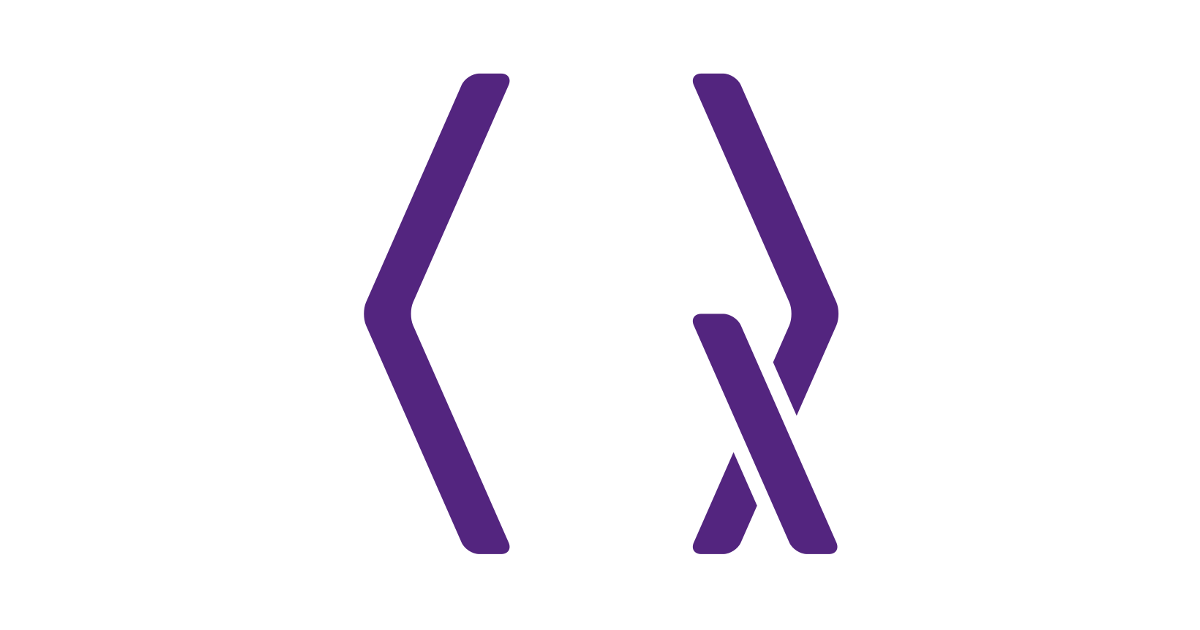
1IBM Quantum, IBM T.J. Watson Research Center, Yorktown Heights, NY 10598, USA.
2Rutgers University
3QuSoft, CWI and University of Amsterdam, the Netherlands.
Find this paper interesting or want to discuss? Scite or leave a comment on SciRate.
Abstract
Motivated by quantum network applications over classical channels, we initiate the study of $n$-party resource states from which LOCC protocols can create EPR-pairs between any $k$ disjoint pairs of parties. We give constructions of such states where $k$ is not too far from the optimal $n/2$ while the individual parties need to hold only a constant number of qubits. In the special case when each party holds only one qubit, we describe a family of $n$-qubit states with $k$ proportional to $log n$ based on Reed-Muller codes, as well as small numerically found examples for $k=2$ and $k=3$. We also prove some lower bounds, for example showing that if $k=n/2$ then the parties must have at least $Omega(loglog n)$ qubits each.
Popular summary
► BibTeX data
► References
[1] Scott Aaronson and Daniel Gottesman. Improved simulation of stabilizer circuits. Physical Review A, 70 (5): 052328, 2004. 10.1103/physreva.70.052328.
https://doi.org/10.1103/physreva.70.052328
[2] Jeremy C. Adcock, Sam Morley-Short, Axel Dahlberg, and Joshua W. Silverstone. Mapping graph state orbits under local complementation. Quantum, 4: 305, 2020. 10.22331/q-2020-08-07-305.
https://doi.org/10.22331/q-2020-08-07-305
[3] E. F. Assmus Jr. On the Reed-Muller codes. Discrete mathematics, 106: 25–33, 1992. 10.1016/0012-365X(92)90526-L.
https://doi.org/10.1016/0012-365X(92)90526-L
[4] Charles Bennett, Gilles Brassard, Claude Crépeau, Richard Jozsa, Asher Peres, and William Wootters. Teleporting an unknown quantum state via dual classical and Einstein-Podolsky-Rosen channels. Physical Review Letters, 70: 1895–1899, 1993. 10.1103/PhysRevLett.70.1895.
https://doi.org/10.1103/PhysRevLett.70.1895
[5] Béla Bollobás. The isoperimetric number of random regular graphs. European Journal of combinatorics, 9 (3): 241–244, 1988. 10.1016/S0195-6698(88)80014-3.
https://doi.org/10.1016/S0195-6698(88)80014-3
[6] Hector Bombin and Miguel Angel Martin-Delgado. Topological quantum distillation. Physical review letters, 97 (18): 180501, 2006. 10.1103/PhysRevLett.97.180501.
https://doi.org/10.1103/PhysRevLett.97.180501
[7] Andrei Z. Broder, Alan M. Frieze, and Eli Upfal. Existence and construction of edge-disjoint paths on expander graphs. SIAM Journal on Computing, 23 (5): 976–989, 1994. 10.1145/129712.129727.
https://doi.org/10.1145/129712.129727
[8] A. R. Calderbank, E. M. Rains, P. W. Shor, and N. J. A. Sloane. Quantum error correction via codes over GF(4). IEEE Transactions on Information Theory, 44 (4): 1369–1387, 1998. 10.48550/arXiv.quant-ph/9608006.
https://doi.org/10.48550/arXiv.quant-ph/9608006
arXiv:quant-ph/9608006
[9] A. Robert Calderbank and Peter W. Shor. Good quantum error-correcting codes exist. Physical Review A, 54 (2): 1098, 1996. 10.1103/PhysRevA.54.1098.
https://doi.org/10.1103/PhysRevA.54.1098
[10] Maxime Cautés, Nathan Claudet, Mehdi Mhalla, Simon Perdrix, Valentin Savin, and Stéphan Thomassé. Vertex-minor universal graphs for generating entangled quantum subsystems. arXiv:2402.06260, 2024. URL https://doi.org/10.48550/arXiv.2402.06260.
https://doi.org/10.48550/arXiv.2402.06260
arXiv:2402.06260
[11] Nathan Claudet, Mehdi Mhalla, and Simon Perdrix. Small $k$-pairable states. arXiv:2309.09956, 2023. URL https://doi.org/10.48550/arXiv.2309.09956.
https://doi.org/10.48550/arXiv.2309.09956
arXiv:2309.09956
[12] R. Cleve and H. Buhrman. Substituting quantum entanglement for communication. Physical Review A, 56 (2): 1201–1204, 1997. 10.1103/PhysRevA.56.1201.
https://doi.org/10.1103/PhysRevA.56.1201
[13] Patricia Contreras-Tejada, Carlos Palazuelos, and Julio I. de Vicente. Asymptotic survival of genuine multipartite entanglement in noisy quantum networks depends on the topology. Physical Review Letters, 128: 220501, 2022. 10.1103/PhysRevLett.128.220501. arXiv:2106.04634.
https://doi.org/10.1103/PhysRevLett.128.220501
arXiv:2106.04634
[14] Axel Dahlberg, Jonas Helsen, and Stephanie Wehner. How to transform graph states using single-qubit operations: computational complexity and algorithms. Quantum Science and Technology, 5 (4): 045016, sep 2020a. 10.1088/2058-9565/aba763.
https://doi.org/10.1088/2058-9565/aba763
[15] Axel Dahlberg, Jonas Helsen, and Stephanie Wehner. Transforming graph states to Bell-pairs is NP-complete. Quantum, 4: 348, 2020b. 10.22331/q-2020-10-22-348.
https://doi.org/10.22331/q-2020-10-22-348
[16] Gang Du, Tao Shang, and Jian-Wei Liu. Quantum coordinated multi-point communication based on entanglement swapping. Quantum Information Processing, 2017. 10.1007/s11128-017-1558-2.
https://doi.org/10.1007/s11128-017-1558-2
[17] David Fattal, Toby S. Cubitt, Yoshihisa Yamamoto, Sergey Bravyi, and Isaac L. Chuang. Entanglement in the stabilizer formalism. arXiv: Quantum Physics, 2004. 10.48550/arXiv.quant-ph/0406168.
https://doi.org/10.48550/arXiv.quant-ph/0406168
arXiv:quant-ph/0406168
[18] Alex Fischer and Don Townsley. Distributing graph states across quantum networks. In Proceedings of IEEE International Conference on Quantum Computing and Engineering (QCE), 2021. 10.1109/QCE52317.2021.00049.
https://doi.org/10.1109/QCE52317.2021.00049
[19] Matthias Fitzi, Nicolas Gisin, and Ueli Maurer. Quantum solution to the Byzantine agreement problem. Physical Review Letters, 87 (21), nov 2001. 10.1103/physrevlett.87.217901.
https://doi.org/10.1103/physrevlett.87.217901
[20] Daniel Gottesman. The Heisenberg representation of quantum computers. arXiv preprint quant-ph/9807006, 1998a. 10.48550/arXiv.quant-ph/9807006.
https://doi.org/10.48550/arXiv.quant-ph/9807006
arXiv:quant-ph/9807006
[21] Daniel Gottesman. Theory of fault-tolerant quantum computation. Physical Review A, 57 (1): 127, 1998b. 10.1103/PhysRevA.57.127.
https://doi.org/10.1103/PhysRevA.57.127
[22] Ervin Győri, Tamás Róbert Mezei, and Gábor Mészáros. Note on terminal-pairability in complete grid graphs. Discrete Mathematics, 340 (5): 988–990, 2017. 10.1016/j.disc.2017.01.014.
https://doi.org/10.1016/j.disc.2017.01.014
[23] Frederik Hahn, Anna Pappa, and Jens Eisert. Quantum network routing and local complementation. npj Quantum Information, 5 (1): 1–7, 2019. 10.1038/s41534-019-0191-6.
https://doi.org/10.1038/s41534-019-0191-6
[24] Mark Hillery, Vladimir Bužek, and André Berthiaume. Quantum secret sharing. Physical Review A, 59: 1829–1834, Mar 1999. 10.1103/PhysRevA.59.1829. URL https://doi.org/10.1103/PhysRevA.59.1829.
https://doi.org/10.1103/PhysRevA.59.1829
[25] Jessica Illiano, Michele Viscardi, Seid Koudia, Marcello Caleffi, and Angela Sara Cacciapuoti. Quantum internet: from medium access control to entanglement access control. In 2022 IEEE Globecom Workshops (GC Wkshps), pages 1329–1334, 2022. 10.1109/GCWkshps56602.2022.10008516.
https://doi.org/10.1109/GCWkshps56602.2022.10008516
[26] Florence Jessie MacWilliams and Neil James Alexander Sloane. The theory of error correcting codes, volume 16. Elsevier, 1977. 10.1137/1022103.
https://doi.org/10.1137/1022103
[27] Clément Meignant, Damian Markham, and Frédéric Grosshans. Distributing graph states over arbitrary quantum networks. Physical Review A, 100 (052333), 2019. 10.1103/PhysRevA.100.052333. arXiv:1811.05445.
https://doi.org/10.1103/PhysRevA.100.052333
arXiv:1811.05445
[28] Rodney Van Meter. Quantum Networking. John Wiley & Sons, Ltd, 2014. ISBN 9781848215375. 10.1002/9781118648919.
https://doi.org/10.1002/9781118648919
[29] Jorge Miguel-Ramiro, Alexander Pirker, and Wolfgang Dür. Optimized quantum networks. Quantum, 7: 919, 2023. 10.22331/q-2023-02-09-919. arXiv:2107.10275.
https://doi.org/10.22331/q-2023-02-09-919
arXiv:2107.10275
[30] Michael A. Nielsen and Isaac Chuang. Quantum computation and quantum information. Cambridge University Press, 2002. 10.1119/1.1463744.
https://doi.org/10.1119/1.1463744
[31] Mihir Pant, Hari Krovi, Don Towsley, Leandros Tassiulas, Liang Jiang, Prithwish Basu, Dirk Englund, and Saikat Guha. Routing entanglement in the quantum internet. npj Quantum Information, 5 (1): 1–9, 2019. 10.1038/s41534-019-0139-x.
https://doi.org/10.1038/s41534-019-0139-x
[32] Robert Raussendorf and Hans J. Briegel. A one-way quantum computer. Physical Review Letters, 86: 5188–5191, May 2001. 10.1103/PhysRevLett.86.5188.
https://doi.org/10.1103/PhysRevLett.86.5188
[33] Robert Raussendorf, Daniel E. Browne, and Hans J. Briegel. Measurement-based quantum computation on cluster states. Physical Review A, 68 (2): 022312, 2003. 10.1103/PhysRevA.68.022312.
https://doi.org/10.1103/PhysRevA.68.022312
[34] Eddie Schoute, Laura Mančinska, Tanvirul Islam, Iordanis Kerenidis, and Stephanie Wehner. Shortcuts to quantum network routing. arXiv:1610.05238, 2016. URL https://doi.org/10.48550/arXiv.1610.05238.
https://doi.org/10.48550/arXiv.1610.05238
arXiv:1610.05238
[35] Andrew Steane. Multiple-particle interference and quantum error correction. Proceedings of the Royal Society of London. Series A: Mathematical, Physical and Engineering Sciences, 452 (1954): 2551–2577, 1996. 10.1098/rspa.1996.0136.
https://doi.org/10.1098/rspa.1996.0136
[36] Stephanie Wehner, David Elkouss, and Ronald Hanson. Quantum internet: A vision for the road ahead. Science, 362 (6412), 2018. 10.1126/science.aam9288.
https://doi.org/10.1126/science.aam9288
Cited by
[1] Maria Flors Mor-Ruiz and Wolfgang Dür, “Influence of noise in entanglement-based quantum networks”, arXiv:2305.03759, (2023).
[2] Nathan Claudet, Mehdi Mhalla, and Simon Perdrix, “Small k-pairable states”, arXiv:2309.09956, (2023).
[3] Maxime Cautrès, Nathan Claudet, Mehdi Mhalla, Simon Perdrix, Valentin Savin, and Stéphan Thomassé, “Vertex-minor universal graphs for generating entangled quantum subsystems”, arXiv:2402.06260, (2024).
[4] Si-Yi Chen, Jessica Illiano, Angela Sara Cacciapuoti, and Marcello Caleffi, “Entanglement-Based Artificial Topology: Neighboring Remote Network Nodes”, arXiv:2404.16204, (2024).
The above citations are from SAO/NASA ADS (last updated successfully 2024-05-14 13:10:48). The list may be incomplete as not all publishers provide suitable and complete citation data.
Could not fetch Crossref cited-by data during last attempt 2024-05-14 13:10:46: Could not fetch cited-by data for 10.22331/q-2024-05-14-1348 from Crossref. This is normal if the DOI was registered recently.
This Paper is published in Quantum under the Creative Commons Attribution 4.0 International (CC BY 4.0) license. Copyright remains with the original copyright holders such as the authors or their institutions.
- SEO Powered Content & PR Distribution. Get Amplified Today.
- PlatoData.Network Vertical Generative Ai. Empower Yourself. Access Here.
- PlatoAiStream. Web3 Intelligence. Knowledge Amplified. Access Here.
- PlatoESG. Carbon, CleanTech, Energy, Environment, Solar, Waste Management. Access Here.
- PlatoHealth. Biotech and Clinical Trials Intelligence. Access Here.
- Source: https://quantum-journal.org/papers/q-2024-05-14-1348/
- :is
- :not
- :where
- ][p
- 01
- 1
- 10
- 100
- 11
- 12
- 127
- 13
- 14
- 15%
- 16
- 17
- 19
- 1994
- 1996
- 1998
- 1999
- 2%
- 20
- 2001
- 2006
- 2014
- 2016
- 2017
- 2018
- 2019
- 2020
- 2021
- 2022
- 2023
- 2024
- 21
- 22
- 23
- 24
- 25
- 26
- 27
- 28
- 29
- 30
- 31
- 32
- 33
- 34
- 35%
- 36
- 362
- 4
- 46
- 48
- 5
- 54
- 6
- 7
- 70
- 8
- 87
- 9
- 97
- a
- above
- ABSTRACT
- access
- across
- affiliations
- Agreement
- ahead
- Alan
- alex
- Alexander
- algorithms
- All
- also
- among
- amsterdam
- an
- and
- Andrew
- Angel
- anna
- any
- applications
- arbitrary
- ARE
- artificial
- AS
- asher
- At
- attempt
- author
- authors
- based
- BE
- between
- bounds
- Break
- by
- byzantine
- cambridge
- CAN
- carlos
- case
- Center
- channels
- Charles
- chen
- circuits
- claude
- Cluster
- Codes
- comment
- Commons
- Communication
- complete
- complexity
- computation
- computational
- computer
- computers
- computing
- Conference
- constant
- construction
- constructions
- control
- coordinated
- copyright
- could
- create
- CWI
- Daniel
- data
- David
- de
- Den
- depends
- describe
- discrete
- discuss
- distributing
- don
- dual
- during
- e
- each
- eli
- enabling
- Engineering
- entanglement
- error
- Ether (ETH)
- European
- example
- examples
- exist
- existence
- family
- far
- fixed
- For
- found
- from
- Gang
- generating
- genuine
- Gilles
- Give
- good
- graph
- graphs
- Grid
- hans
- harvard
- Have
- heights
- hold
- holders
- holds
- How
- How To
- HTTPS
- i
- IBM
- IEEE
- if
- improved
- in
- individual
- influence
- information
- initiate
- institutions
- interesting
- interference
- International
- Internet
- james
- JavaScript
- jeremy
- John
- joshua
- journal
- Last
- least
- Leave
- License
- List
- local
- London
- lower
- Ltd
- mapping
- mar
- marcello
- maria
- Mario
- mark
- mathematical
- mathematics
- matthias
- May..
- medium
- Michael
- Month
- must
- nathan
- Need
- needs
- neighboring
- Netherlands
- network
- networking
- networks
- Nicolas
- nodes
- Noise
- normal
- note
- nov
- number
- NY
- of
- on
- ONE
- only
- open
- Operations
- optimal
- optimized
- or
- original
- over
- pages
- pairs
- Paper
- parties
- party
- paths
- Peter
- physical
- Physics
- plato
- Plato Data Intelligence
- PlatoData
- press
- Problem
- Proceedings
- processing
- proportional
- protocols
- Prove
- provide
- published
- publisher
- publishers
- Quantum
- Quantum Computer
- quantum computers
- quantum computing
- quantum entanglement
- quantum error correction
- quantum information
- Quantum Internet
- quantum networking
- quantum networks
- quantum physics
- Qubit
- qubits
- R
- random
- recently
- references
- registered
- regular
- remains
- remote
- representation
- require
- research
- resource
- review
- Richard
- road
- ROBERT
- Rodney
- routing
- royal
- s
- Sam
- Science
- Science and Technology
- SCIENCES
- scott
- scott aaronson
- Secret
- Series
- Series A
- shared
- sharing
- Sharma
- shortcuts
- showing
- siam
- Silverstone
- Simon
- simulation
- small
- Society
- solution
- some
- special
- State
- States
- Study
- Successfully
- such
- suitable
- survival
- swapping
- T
- Technology
- that
- The
- the Netherlands
- their
- then
- theory
- this
- Title
- to
- too
- topological quantum
- Transactions
- Transform
- transforming
- under
- Universal
- university
- unknown
- updated
- URL
- USA
- using
- van
- via
- vision
- volume
- W
- want
- was
- Watson
- we
- WELL
- when
- which
- while
- william
- with
- Wolf
- Workshops
- year
- zephyrnet

